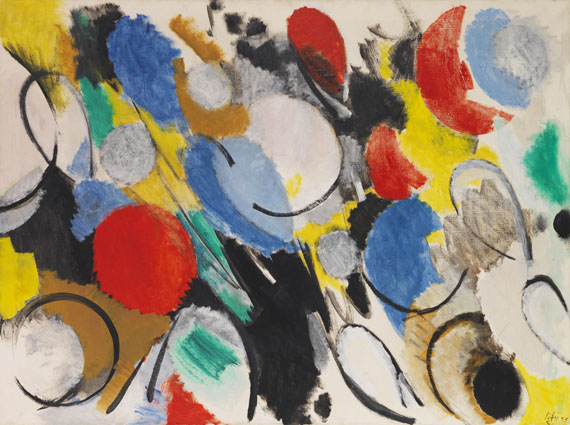Dictionary


Artist groups of Informalism
Informel’s development post-World War Two was not influenced by one individual, but rather by various groups. Using diverse approaches, they reflected theoretically and practically on Informel’s new, abstract and largely gestural forms of expression. Artists and art historians frequently collaborated, as exemplified in the work of Munich’s ZEN 49 group, and artistic exchanges took place between various groups and their members.
Germany was an important location for the development of Informel. Numerous artists’ groups were founded there during in the late 1940s. These included (in addition to ZEN 49) Quadriga (Frankfurt), 53" (Düsseldorf), and SPUR, WIR and GEFLECHT in Munich. In Italy, Informel was represented by the Gruppo degli Otto and Arte Nucleare, and in Spain by the groups Dau al Set and El Paso. The international CoBrA group took its name from the first letters of the founders’ respective home cities – Copenhagen, Brussels and Amsterdam.
Informel’s development post-World War Two was not influenced by one individual, but rather by various groups. Using diverse approaches, they reflected theoretically and practically on Informel’s new, abstract and largely gestural forms of expression. Artists and art historians frequently collaborated, as exemplified in the work of Munich’s ZEN 49 group, and artistic exchanges took place between various groups and their members.
Germany was an important location for the development of Informel. Numerous artists’ groups were founded there during in the late 1940s. These included (in addition to ZEN 49) Quadriga (Frankfurt), 53" (Düsseldorf), and SPUR, WIR and GEFLECHT in Munich. In Italy, Informel was represented by the Gruppo degli Otto and Arte Nucleare, and in Spain by the groups Dau al Set and El Paso. The international CoBrA group took its name from the first letters of the founders’ respective home cities – Copenhagen, Brussels and Amsterdam.
Offers for Informal
Headquarters
Joseph-Wild-Str. 18
81829 Munich
Phone: +49 89 55 244-0
Fax: +49 89 55 244-177
info@kettererkunst.de
Louisa von Saucken / Undine Schleifer
Holstenwall 5
20355 Hamburg
Phone: +49 40 37 49 61-0
Fax: +49 40 37 49 61-66
infohamburg@kettererkunst.de
Dr. Simone Wiechers / Nane Schlage
Fasanenstr. 70
10719 Berlin
Phone: +49 30 88 67 53-63
Fax: +49 30 88 67 56-43
infoberlin@kettererkunst.de
Cordula Lichtenberg
Gertrudenstraße 24-28
50667 Cologne
Phone: +49 221 510 908-15
infokoeln@kettererkunst.de
Hessen
Rhineland-Palatinate
Miriam Heß
Phone: +49 62 21 58 80-038
Fax: +49 62 21 58 80-595
infoheidelberg@kettererkunst.de
We will inform you in time.




